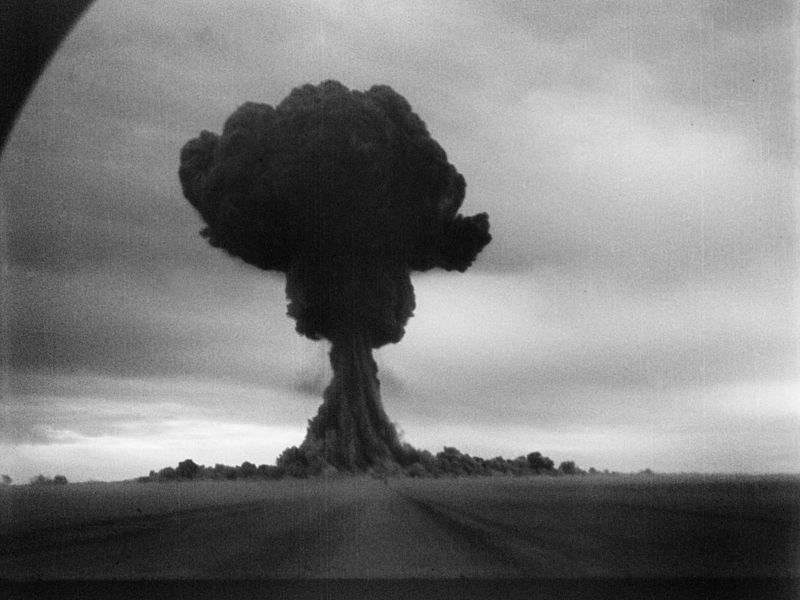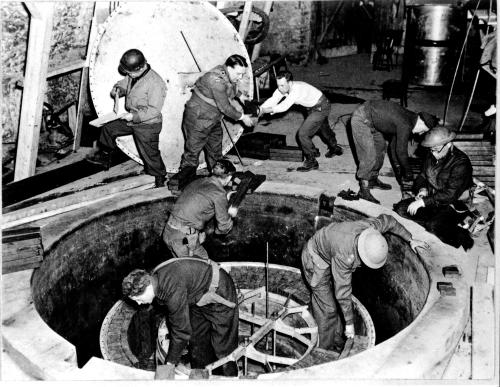In 1947, shortly after World War II, the British partitioned their colony of India into the new Hindu nation of India and the new Muslim nation of Pakistan. The largest migration in human history followed as Muslims moved west into Pakistan and Hindus moved east into India. Kashmir was controlled by India although the majority of their citizens were Muslim. Since the partition, India and Pakistan have argued over Kashmir and occasionally fought wars. India has also had strained relations with bordering China over some border areas.
India was not an independent nation when the United Nations was created. The major international players at the time who were on the winning side were given seats on the Security Council. Eventually all of them developed nuclear weapons. Being such a huge nation, India felt that it should be given more respect in the international community and the United Nations. Eventually, leaders in India decided that having nuclear weapons would cause the international community to give India the respect that it deserved. In addition, given their persistent regional disputes and conflicts, it was not surprising that India began to pursue nuclear weapons development.
Although India was a democratic nation, from the beginning, the Indian nuclear weapons development program was authorized and guided by a few powerful people in the Indian government. India established a nuclear research program before the end of World War II and before it achieved independence. The Indian Atomic Energy Commission was established in 1948, a year before independence. Although it was claimed that the Commission was to oversee the peaceful use of atomic energy, the possibility of weapons development was left open.
In 1954, India began work on nuclear weapons at a new facility that grew rapidly between 1954 and 1959. The weapons program eventually consumed a third of India’s research and development budget and employed over a thousand people. India’s first nuclear reactor was constructed in 1955. The United States, the United Kingdom and Canada supplied reactor components, heavy water and uranium fuel for India to have a powerful sophisticated reactor. known as CIRUS. Although the intention of the international community was for the reactor to be used for the peaceful generation of electrical power, it was ideal for the production of plutonium. No regulations or inspections were imposed and India soon turned the reactor to the production of plutonium for nuclear weapons. India proceeded to design and build her own reactor based on the CIRUS design. She also produced her own uranium fuel and created breeder reactors for fuel production. A plutonium extraction facility began operation in 1964.
Tensions increased between India and China in the late 1950s and in October of 1962, China attacked India over a disputed border region. The Soviet Union had supported India in the past but sided with China this time. India appealed to the US but before the U.S. could deploy, China withdrew after easily defeating the Indian military.
The conflict with China and the knowledge that China was working on nuclear weapons spurred India to accelerate her own nuclear weapons development. A plutonium extraction plant was built and started operations in 1964.China exploded its first atomic bomb in 1964 and Indian politicians called for India to quickly develop her own atomic bomb, claiming that it was only for “peaceful” purposes. There were serious conflicts between Indian political factions over nuclear weapons development. In the meantime, Pakistan became concerned with India’s nuclear research. In 1965, Pakistan attacked India. This led to a series of attacks and counter attacks mainly in the Kashmir region. The war ended in 1966. India was more resolved than ever to develop nuclear weapons. Work continued in the nuclear program but there were problems with the reactors and plutonium extraction facility. It took until 1969 for India to have enough plutonium for a bomb. Another war with Pakistan 1971 encouraged India to tested her first nuclear bomb and the test took place in 1974.
Following the detonation of the first Indian bomb, support for India’s nuclear program in India and in the international community collapsed. The Indian nuclear program slowed down as international sanctions impacted their reactors. During the next decade some progress was made but the program picked up steam again in the early 1980s with the start of a ballistic missile program for both short and long range missiles. The Indians also began working on the miniaturization necessary to put an atomic bomb in a warhead that would fit in a missile. In the 1990s, both India and Pakistan worked on the development and deployment of nuclear weapons. India has missiles, bombers, surface ships which can deliver nuclear bombs and is working on submarines. India is estimated to have around one hundred nuclear warheads.
India Agni-II missile http://img.radiobras.gov.br/Aberto/index.php/Imagens.Principal.120.0.2004-01-31


